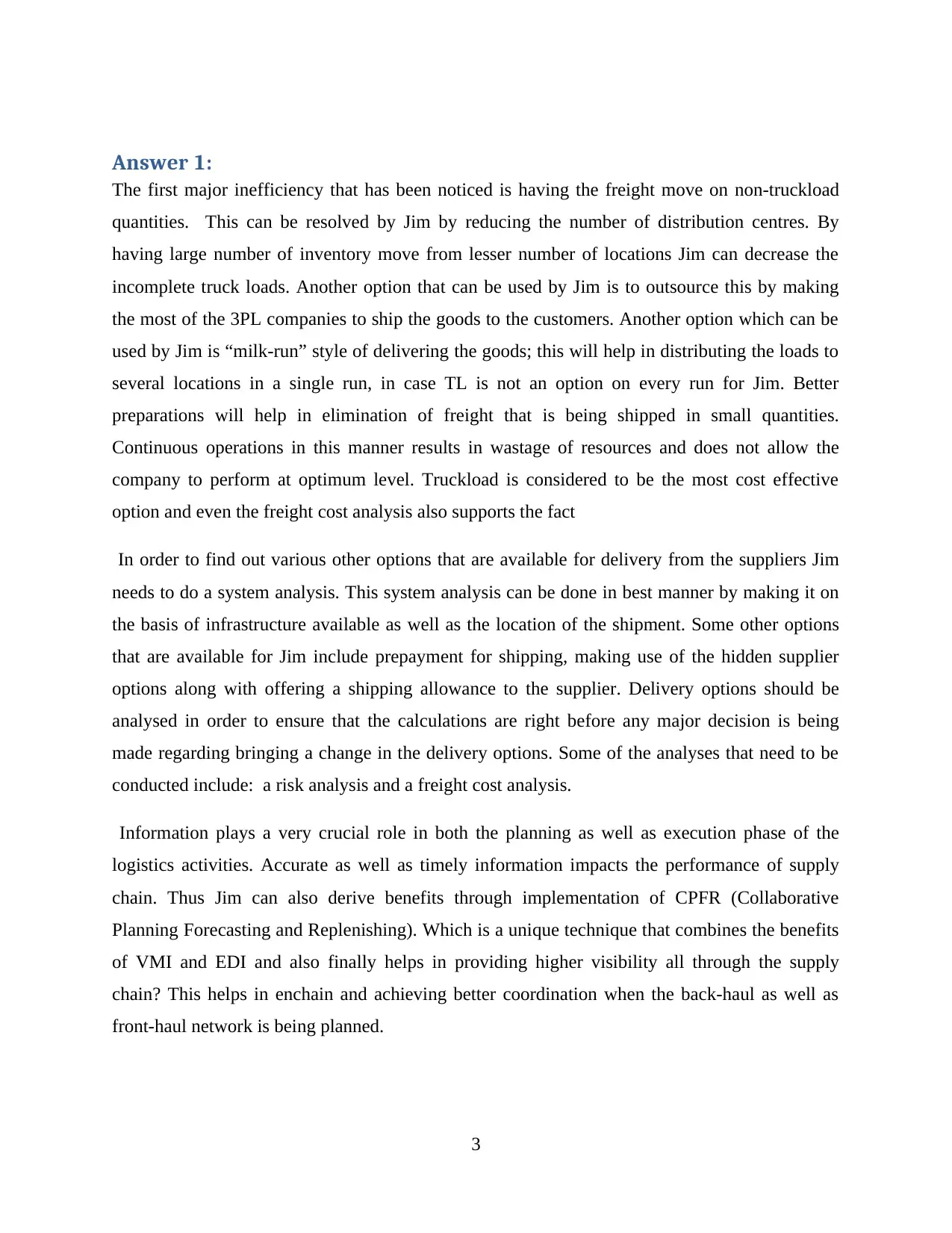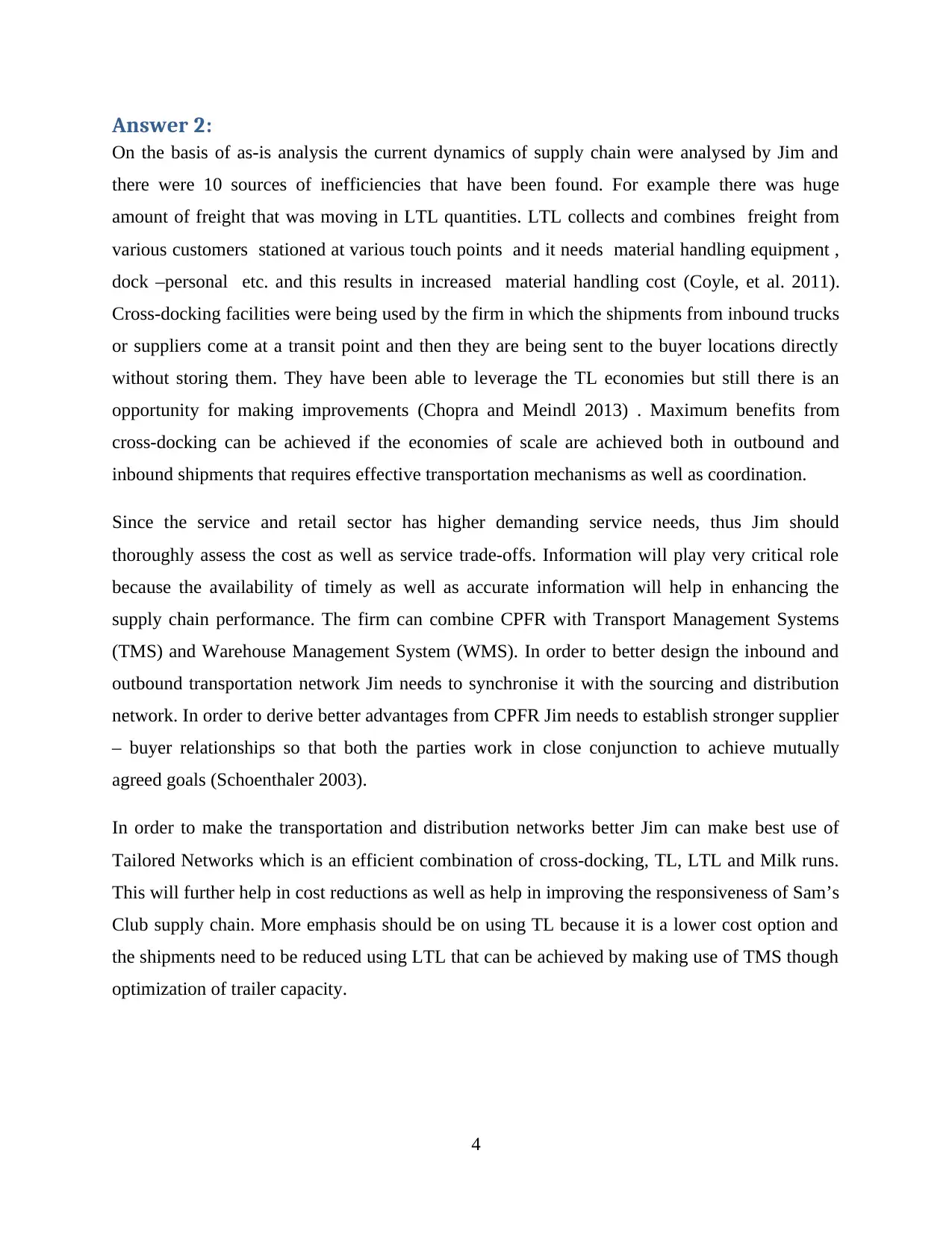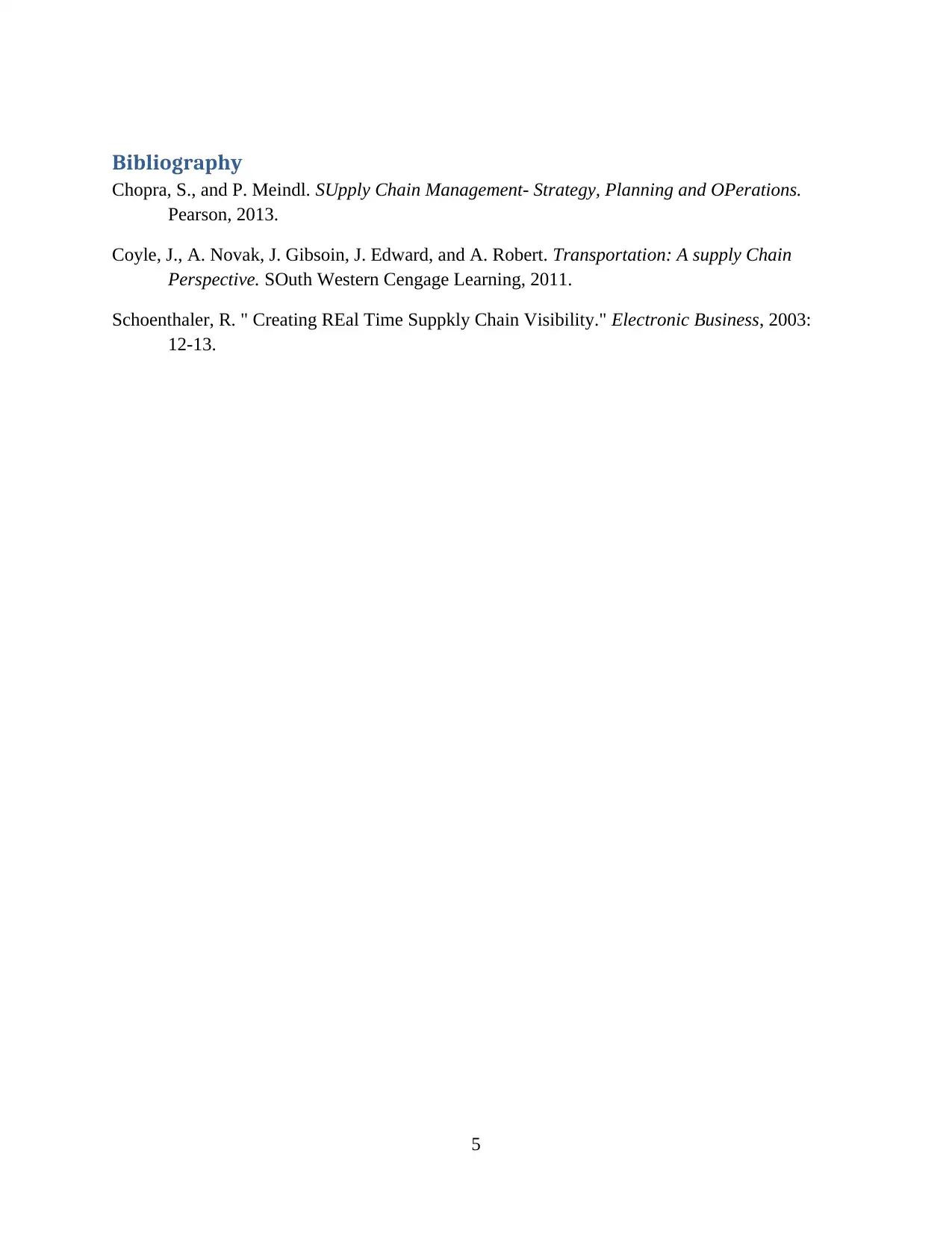Business Development Case Study: The Club War - Analysis Report
VerifiedAdded on 2019/11/08
|5
|908
|160
Case Study
AI Summary
This case study examines the supply chain inefficiencies within "The Club War" and proposes solutions to improve operations. The analysis focuses on various aspects of the supply chain, including freight management, distribution center optimization, and the use of 3PL companies. It explores strategies such as "milk-run" deliveries and system analysis to identify optimal delivery options. The study emphasizes the importance of accurate and timely information, suggesting the implementation of CPFR (Collaborative Planning Forecasting and Replenishing) to enhance supply chain visibility and coordination. Furthermore, the case study highlights the significance of cross-docking, transportation networks, and the use of TMS and WMS systems to synchronize inbound and outbound transportation. The ultimate goal is to reduce costs, improve responsiveness, and establish stronger supplier-buyer relationships. The solution also covers the importance of tailored networks that combine cross-docking, TL, LTL, and milk runs for cost reductions and improved supply chain performance.
1 out of 5










![[object Object]](/_next/static/media/star-bottom.7253800d.svg)